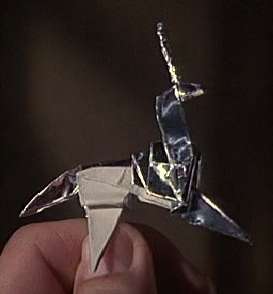 In response to my post on speculative realism and the alethetics of discourse, Asher Kay writes:
In response to my post on speculative realism and the alethetics of discourse, Asher Kay writes:
What strikes me after reading this post (and the one on the Alethetics of Rhetoric) is that what is revealed in an ontology might be more powerful by far than a moral theory, by providing a vista for self-realization rather than a didactic formula.
I’m hoping to deal with these issues in greater detail in the future. Zer0 Books has asked me if I’d be interested in pulling together a book after I finish The Democracy of Objects. Right now I’m vacillating between either developing an object-oriented politics and normative theory, or devoting that book to an object-oriented account of signs along the lines I’ve been discussing recently. I’m leaning towards the latter project because I think it’s important to show that object-oriented ontology in its realism is not making a call for a scientistic naturalism, but still leaves a lot of room, in suitably re-constructed form, for a number of the sorts of social and cultural analyses the world of theory has come to hold so dear.
At any rate Bruno Latour’s Politics of Nature goes a long way, I believe, towards resituating these questions. There he revises the fact/value distinction and develops something like an object-oriented normative theory. Where, very crudely put, traditional normative theory might look for a set of norms or prescriptions that allow us to decide moral, ethical, and political issues, Latour sees the issue very differently. Under the traditional account of normativity we are to avoid ever conflating the “is” and the “ought”. What ought to be the case, the story goes, holds regardless of what the facts may be. In other words, the ought or domain of normativity is treated as impervious to the realm of facts.
Latour, by contrast, sees both the factual and the domain of values as a sort of process that ranges from what he calls “perplexity” to “institution”. Very roughly, Latour contends that discussions about value are really discussions about matters of concern where the appearance of new actors, human or nonhuman, generate perplexity. Additionally, Latour contends that normative discussions erupt when something appears that is not counted that nonetheless “co(m)-plicates” an established organization. The term “co(m)-plication” is not a term that will be found in Latour, but I think it nicely gets at what he’s striving to draw our attention to. “Co(m)-plication” is a word filled with a number of different attractor states, simultaneously evoking resonances of complication, co-implication, and co-plication in the sense of actors being “folded together” or “folded into one another”.
read on!
 However, in thinking the phenomenon of co-plication, we should not understand a completed work of origami, where the folds have nicely fallen into place. Rather, we should understand an aleatory event, the arrival of a new actor on the scene, that demands, as it were, to be folded in to the network of actors but which is hitherto unheard of. Latour believes that this moment of co(m)-plication is common to both facts and values. Facts are not that which is established, but instead are that which upsets or disturbs the established. The co(m)-plicated is thus, for example, that moment in the laboratory setting where unexpected data emerges, throwing ones hypotheses into doubt. As a co(m)-plication– I cannot resist –it per-plicates –demanding that the aleatory and startling fact be folded through or into an existing network of objectile relations. In claiming that that which co(m)-plicates a situation generates per-plication or the demand to be folded through, what is indicated is that the phenomenon has not been counted. Not only is it un-counted in the network or unintegrated, but it is that which is not counted on.
However, in thinking the phenomenon of co-plication, we should not understand a completed work of origami, where the folds have nicely fallen into place. Rather, we should understand an aleatory event, the arrival of a new actor on the scene, that demands, as it were, to be folded in to the network of actors but which is hitherto unheard of. Latour believes that this moment of co(m)-plication is common to both facts and values. Facts are not that which is established, but instead are that which upsets or disturbs the established. The co(m)-plicated is thus, for example, that moment in the laboratory setting where unexpected data emerges, throwing ones hypotheses into doubt. As a co(m)-plication– I cannot resist –it per-plicates –demanding that the aleatory and startling fact be folded through or into an existing network of objectile relations. In claiming that that which co(m)-plicates a situation generates per-plication or the demand to be folded through, what is indicated is that the phenomenon has not been counted. Not only is it un-counted in the network or unintegrated, but it is that which is not counted on.
As good object-oriented ontologists, it is important to stress that this dimension of facts as moments of co(m)-plication that surprise or have the status of an encounter is not restricted to the laboratory setting or human activities. Thus, for example, the appearance of the cane toad in Australia is a co(m)-plication that per-plicates all the elements of the Northern Australia’s eco-system. Likewise, perhaps a meteor co(m)-plicated the earth millions of years ago.
For Latour, the world of facts and values cannot be smoothly separated. Normative discussion occurs in moments of co(m)-plication when a new actor appears on the scene, per-plicating the organization of the network. Thus, for example, the invention of the birth control pill is a co(m)-plication of the social network relating men and women. It is a startling appearance that changes the relationship between men and women as well as the relationship of women to their own bodies. What is called for in moments like these is a re-evaluation of the dynamics of the network or its organization. In the second phase, contends Latour, consultation takes place. The actors involved must be consulted. Again, these actors are not simply human actors, but involve a whole range of nonhuman actors. The pill involves not simply sexual practices and gender relations, but also economy, production, biology, families, and so on and so forth.
The third stage following per-plication and consultation involves what Latour calls hierarchy. Given the appearance of this new actor, how are actors to be hierachialized or organized? Will family outweigh the new found freedoms of women as a result of the pill? Do the potential health risks of the pill outweigh the new sexual and economic freedoms afforded by the pill? Do these new freedoms call for new forms of social organization, workplace relations, new forms of sexuality, and so on? What about the manner in which the drug is produced? What actors are involved? Does the drug require the destruction of Amazonian rain forests to harvest molecules used in its production, for example? These are all questions of hierarchialization and how actors, relations, organizations, are to be counted. Finally there is the moment of what Latour calls institution where closure is reached, the entire co(m)-plication disappears like tracks in the Sahara, and a new practice or form of relation is black boxed in such a way that “it goes without saying”. With the achievement of institution the actor has become an element in the network of actors or objects, the network organization has become modified and has a new hierarchical structure of inter-related actors or objects, and the actor passes from the realm of controversy.
I have only given a thumbnail sketch of Latour’s understanding of values in this post. What distinguishes his discussion of values and facts from those we commonly encounter in these contexts is, on the one hand, his emphasis on risk, uncertainty, turbulence, and controversy, and on the other hand, his inclusion of all sorts of nonhuman actors at the heart of these co(m)-plications. Where often we hear discussions about values and norms begin from the premise of what we must pre-sup-pose (where the hyphenation should capture the sense of both posing and positing) in order for some form of engagement to be possible, Latour emphasizes the manner in which the appearance of new actors co(m)-plicates and per-plicates relations among entities in an existing network. In the former approach, for example, we get Habermas’ Theory of Communicative Action, predelineating or pre-sup-posing norms governing discourse that must be there at the outset for discourse to take place. In the latter approach, by contrast, the moment of “matters of concern” or co(m)-plication is the appearance of a new actor such as massive cultivation of bovine livestock that require the clearing of rain forests and that significantly increase contributions to greenhouse gas emissions. In our little corner of the blogosphere, the moment of co(m)-plication might be the appearance of our pseudo-Diogenes in the form of a Dejan and the manner in which his particular style of speech act perturbs established networks, generating controversies and per-plications. In the bovine case, all sorts of actors must be consulted: The soil conditions of cleared rain forests, methane gases, the economies of those living in these regions, the cows themselves, all those mouths that crave beef, the pharmaceutical industry that draws on the molds, fungi, and plants that it discovers in the rain forests, the new diseases that appear, the epidemiology of these diseases, and many more actors besides. In my view, this way of posing the question of values is far closer to what actually goes on in our practice and most significant concerns.
August 25, 2009 at 4:42 pm
Somewhat related: Latour’s “Why Has Critique Run out of Steam?” (Critical Inquiry 30:2)
August 25, 2009 at 4:54 pm
[…] I’m all happy and cheerful and so forth. Then I read a quote like this (from Larval Subjects), and I begin to wonder if my philosophical sky is really so cloudless: I think it’s important to […]
August 25, 2009 at 9:01 pm
You say: “we should understand an aleatory event, the arrival of a new actor on the scene, that demands, as it were, to be folded in to the network of actors but which is hitherto unheard of. Latour believes that this moment of co(m)-plication is common to both facts and values. Facts are not that which is established, but instead are that which upsets or disturbs the established.” When is this not the case? Is the aleatory ever absent? Further, is the relation of values and facts ever not miscible? Nietzsche addressed this — I thought to effect.
August 26, 2009 at 1:37 am
[…] Realism Leave a Comment Remarking on my post on values and normativity entitled “Co(m)-plications“, Asher Kay of Spoonerized Alliterations writes: This is a tantalizing vision. I, for one, am […]
October 1, 2009 at 3:20 am
[…] is similar with Reid’s suggestion that OOO somehow rejects questions of normativity. Again I have written about these issues at length in the context of Latour and have plans to do more work on these issues in the future. But once […]